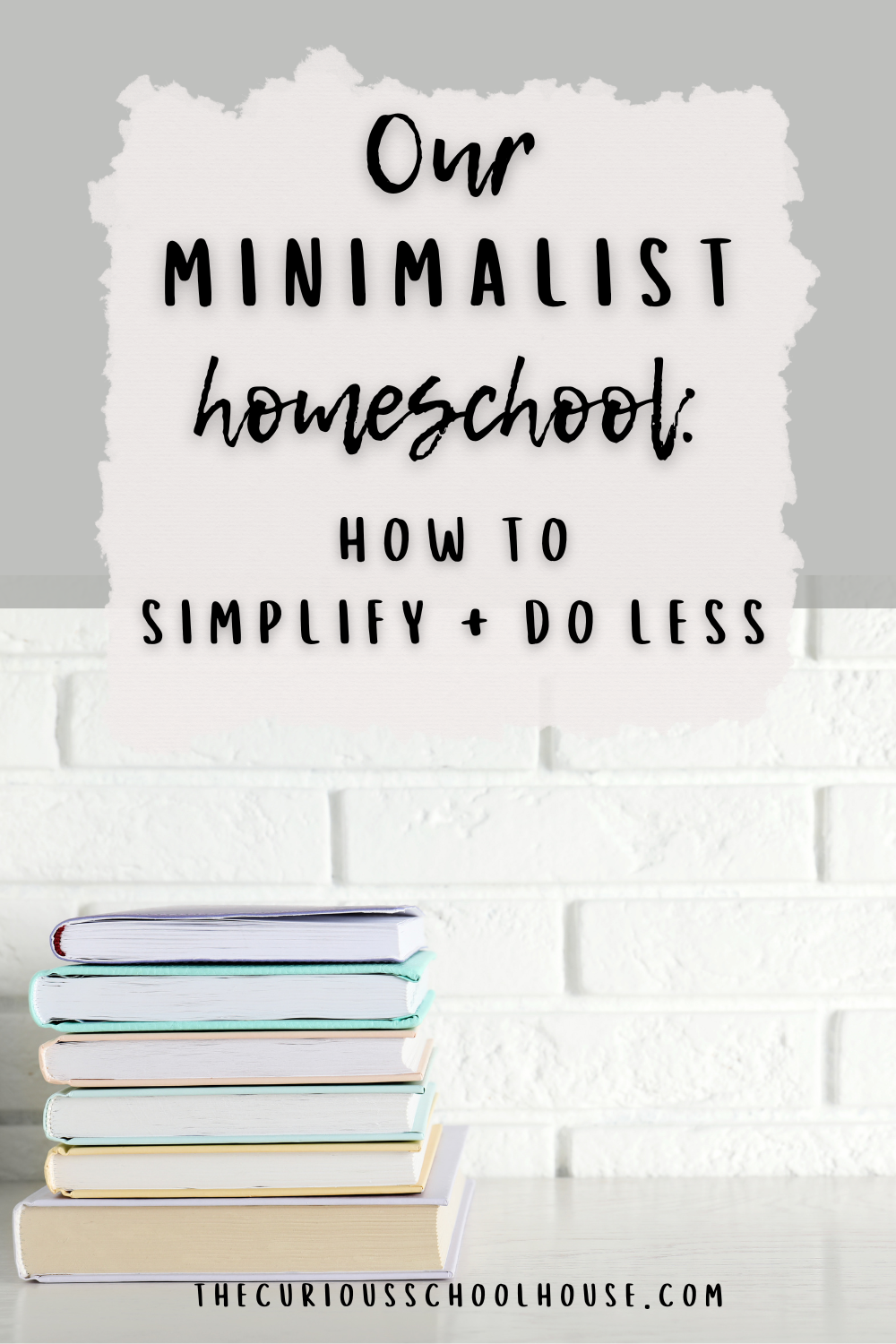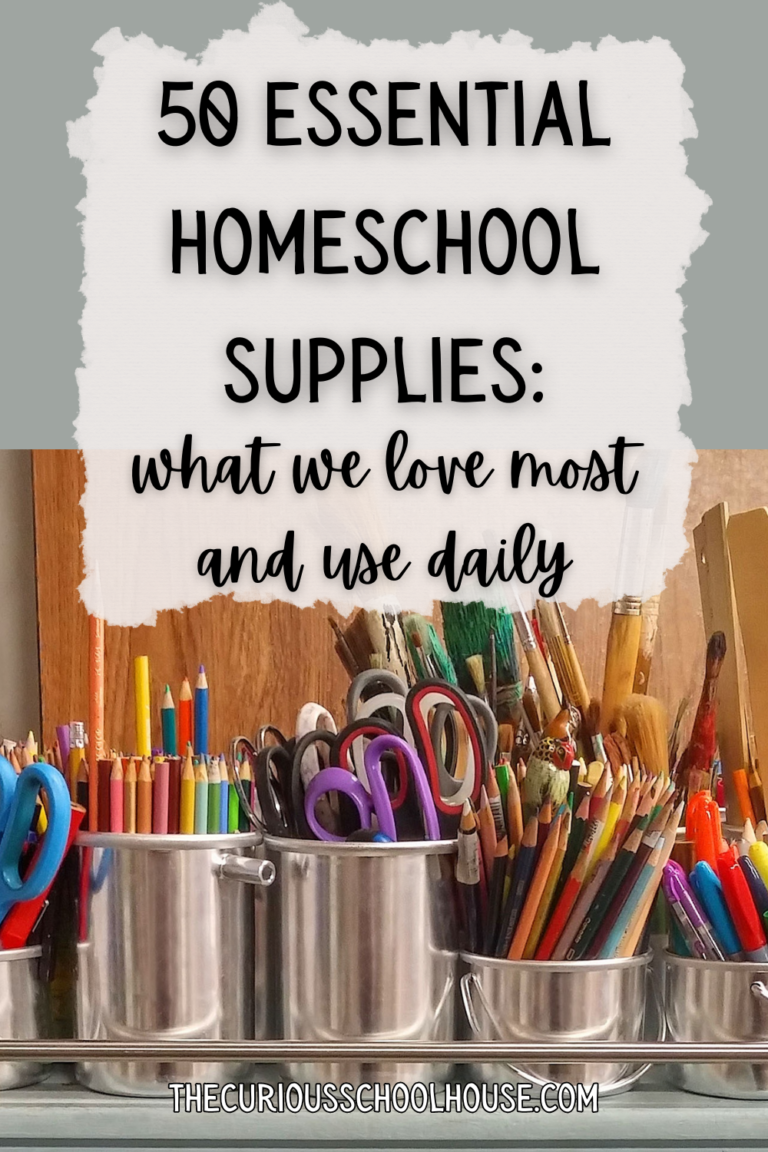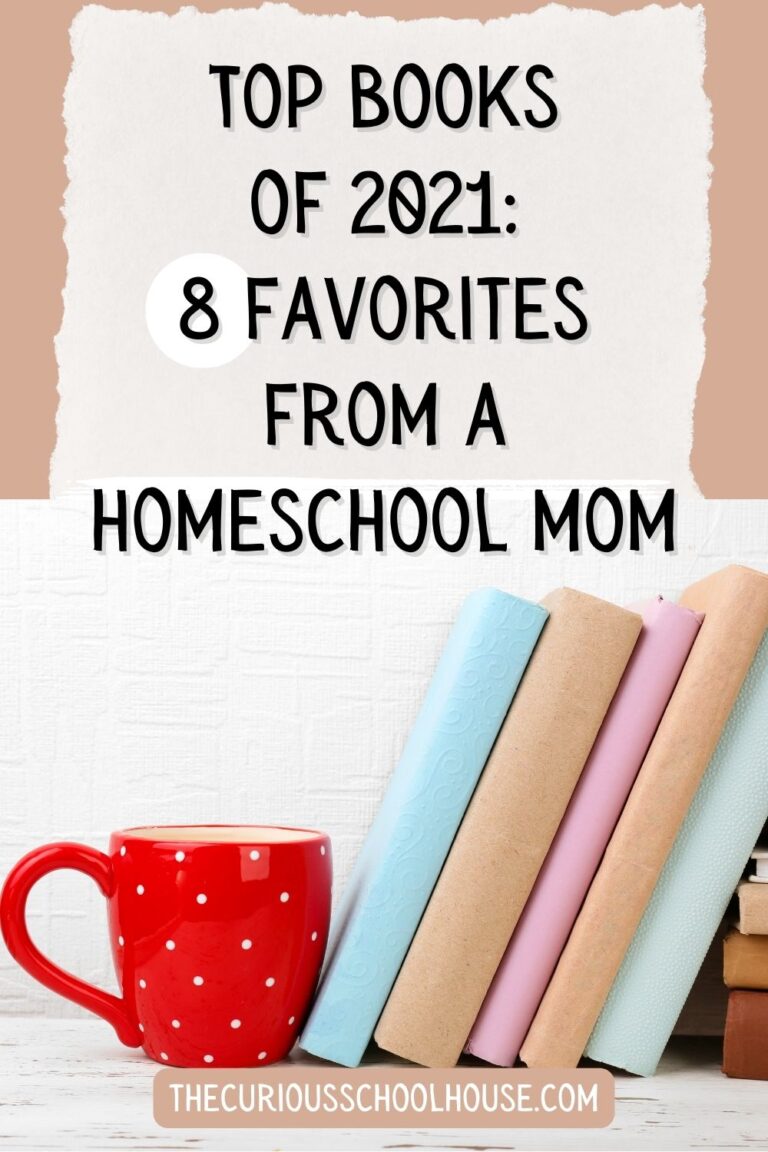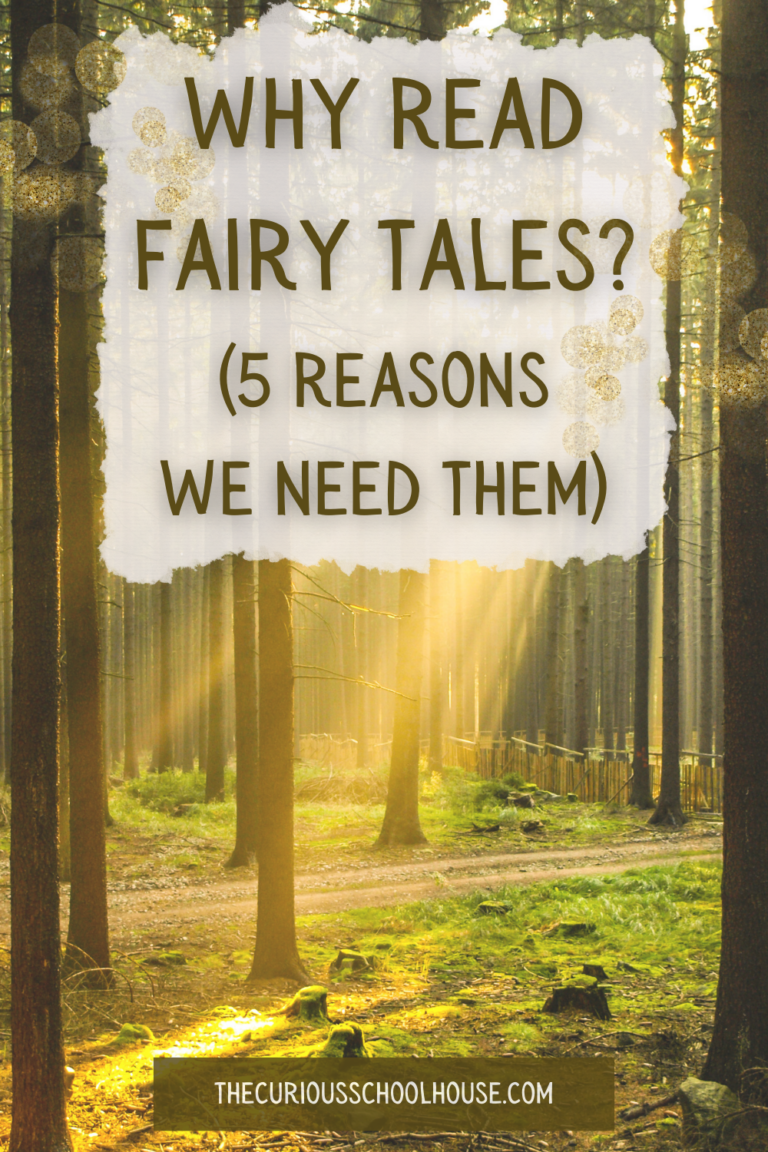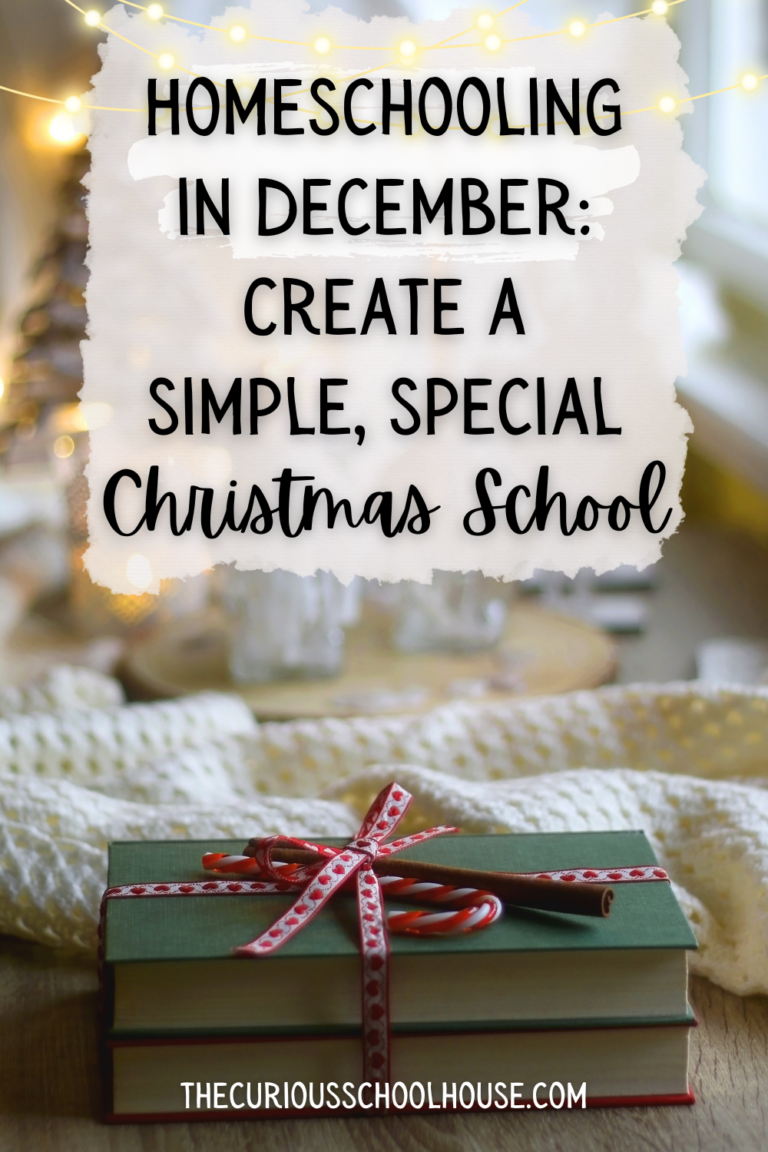Our Minimalist Homeschool: How to Simplify and Do Less
This post explains our minimalist homeschool approach and the reasons for it: how we buy very little curriculum, focus on just three core areas, and all the subjects that can fit neatly into those three areas. Find out if a minimalist homeschool might work for you, too!
Anyone who knows me may laugh at the idea of us being “minimalist,” because our home and spaces are NOT minimalist by any definition. Cleaning and organizing are not my strengths, several of our children have hoarding tendencies, and all of our children love to draw and create and build which, for those of you who have forgotten what it was like to be a child, is a MESSY business.
Imagine you threw a Crayola factory, a paper plant, and Hobby Lobby into a blender and then liberally sprayed it out a hose and you’ll get an idea of the state of our dining room at the end of the day.
Despite all this – maybe because of it? – I have always been drawn to the idea of minimalism and sometimes secretly fantasize about throwing EVERYTHING away and moving to a tiny cottage in the woods. Maybe that’s why I love camping – because we only have a few possessions along and everything feels so simple and easy!
However, despite our sometimes-too-cluttered house, I do feel that we have been steadily moving towards a minimalist homeschool experience.
Some of the reasons for this are purely practical: with five children at all different ages and stages, we cannot survive the homeschool year without simplifying our schedule and curriculum. We also do not have room in the budget to buy five full curriculum sets for five different grades. Furthermore, for the last eleven years we have always had either a baby or a toddler or pregnant Mom in our house (often two out of the three), which is downright exhausting. This, again, leads to simplifying and figuring out how we can get the most bang for our buck.
Other reasons for a minimalist homeschool are philosophical. After reading dozens of excellent books on education and homeschooling, I am convinced that less is more, that what children need most is stories and play, and that great books will take us a very long way. This, combined with the practical necessity of a large, busy family, has led us to our minimalist homeschool. Here is how we do it!
Three Elements for a Simple, Minimalist Homeschool
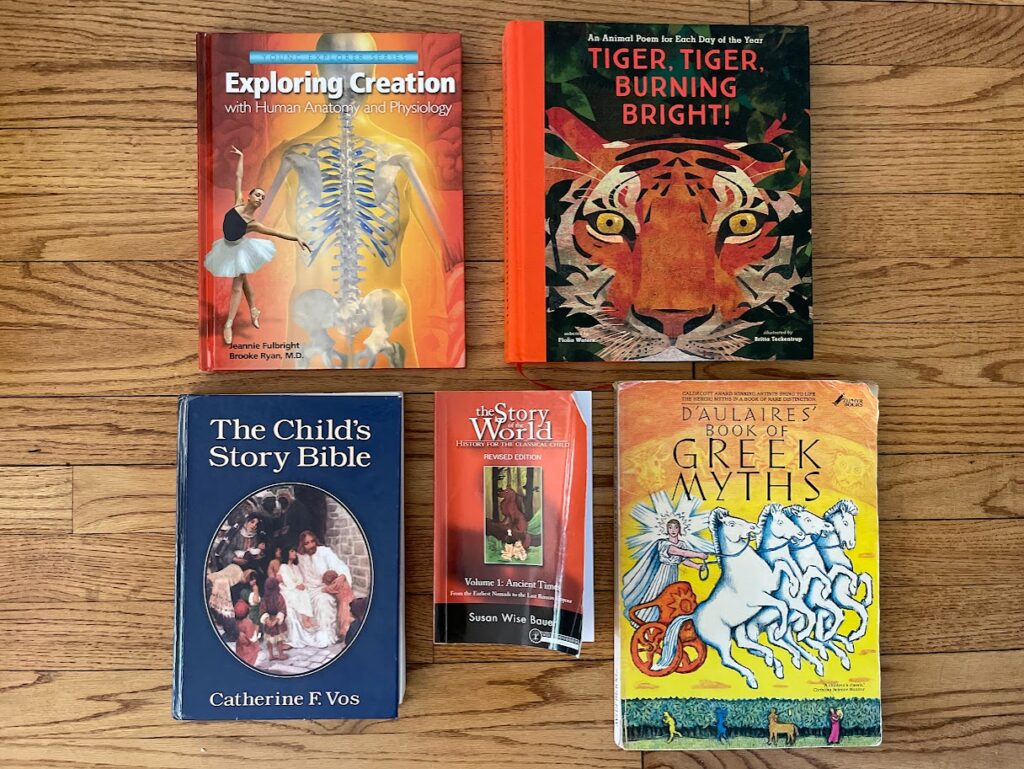
Simple Element #1: Morning Time
Morning time has become both a favorite part of the day and an essential foundation to our homeschool life. This is not at all original to me – many homeschoolers do it and veteran homeschooler Cindy Rollins has written a wonderful book on the topic. It is the ultimate magic key to multi-tasking and getting your morning off to a predictable and peaceful start. You may think I am exaggerating, but is truly such a wonderful time!
A simple explanation of the idea is that we all come together in the morning to cover “subjects” that everyone can enjoy, from the little toddler up to Mom herself. This is multi-tasking because everyone is learning all together, at the same time, and it is effective because they are subjects that we all can understand on some level. Here are examples of subjects that work remarkably well for all ages together:
- Bible stories
- Devotionals
- Hymns
- History
- Science
- Poetry
- Literature
- Fairy tales
- Memory work
- Art appreciation
- Music appreciation
- Shakespeare
- fill in the blank – you will probably think of more!
Note: of course we do not do all of these, and you shouldn’t either. These are simply possibilities of subjects that you could do during Morning Time. At the moment, we do three or four per day; if your kids are younger than mine, you would need to do less, and if they are older you could probably do more.
The final key to making this an effective learning time is narration. Narration simply means that your children tell back what they have heard in their own words. This is how you know if they are listening and understanding what you are reading to them! Narration is powerful because it leads naturally into composition (they are mentally arranging and organizing the information in their head, in order to narrate back what they heard!) and writing (once they write down what they have composed or narrated). Our children are still doing oral narrations but I hope next year to add in written narrations for the older boys.
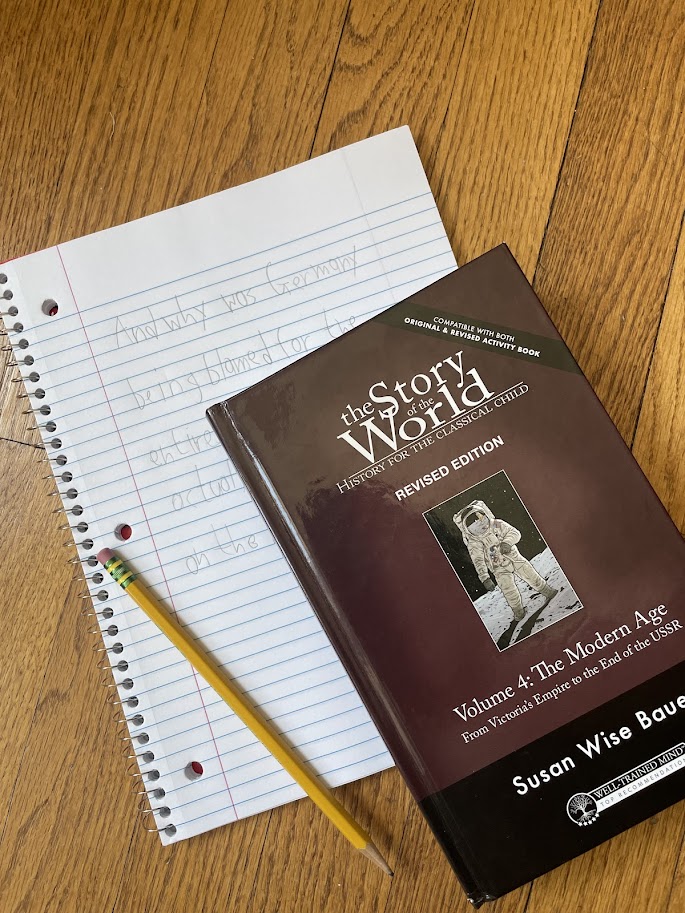
Simple Element #2: Phonics or Copywork
For the youngest students, you will likely want to start with a phonics program of some sort. We use Logic of English until the child is reading fluently, at which point we drop it and switch to copywork. Copywork is another tool that is deceptively simple but is actually a magical homeschool unicorn – it covers so many subjects at once! In its simplest form, you could take any well-written piece of literature and have your child copy one sentence from it every day. If you do this, your child is learning:
- Handwriting: encourage and/or require them to use their best handwriting and form letters correctly. Daily practice does wonders!
- Spelling: seeing and copying down correct spelling helps immensely.
- Grammar: they are absorbing complex sentence structures and grammar rules without even knowing it! Hearing good grammar read aloud (through good books) and writing down good grammar are two excellent ways to learn how good writing should sound.
- Composition: again, if you choose excellent literature, your child will be slowly internalizing the style and structure of composition as they copy it down.
- Attention: your child must pay careful attention to the sentence he is copying in order to catch all of the words, the spelling, and the punctuation. We have one boy in particular who misses some part of the sentence, every single time, which tells me he desperately needs this practice!
- Dictation: another, harder variation of copywork is that instead of copying from a book, you dictate a sentence out loud and then have your child write it down. This style of copywork trains the memory along with the above-mentioned skills.
Let me stop here for a moment to summarize. In just two blocks of time (morning time and phonics/copywork), you have covered a total of TWENTY possible subjects or skills! Is that amazing or is that AMAZING? Or course, you wouldn’t do every Morning Time subject every day, probably not even every year, but you could rotate between them in a loop schedule and theoretically hit quite a few of them throughout the course of your school year.
Furthermore, did you notice that none of these things (besides phonics) require a curriculum? I feel like this is one of the well-kept secrets of the homeschool world: once you gain a little confidence, you can do most subjects well – some would say even better – without spending any money on curriculum! Copywork simply requires a good book, which you could get at the library if your budget is really tight, and for most of the Morning Time subjects also you only need a book.
Yes, you could find a curriculum for Poetry – or you could get a fun collection of children’s poems at the library, read one each day, and perhaps pick a favorite to memorize.
Yes, you could find a curriculum for Science – or you could search reputable book lists (this post has a few of my favorite sources to check) for the best books on a certain topic, check them out of the library, read through them slowly and have the children narrate what they hear.
Neither option is necessarily better than the other, my point is just that you have a choice and you don’t have to spend oodles of dollars if you don’t want to. Personally we do a mixture – we use a curriculum for a few things, some books we borrow from the library, and others that I want to have in our home library I will buy, ideally used but sometimes new.

Simple Element #3: Math
The third and final part of our minimalist homeschool is math. Math is important and beautiful and we all need it. Our boys have generally enjoyed math and done well with it, but in spite of that math has continually been our hardest subject to fit in, simply because everyone is at a different level and I can’t easily combine them. We have experimented with doing some multiplication drill and division review together, which is useful for multiple ages, but we can’t seem to get around the fact that they each need a bit of individual time to address new skills at their own level.
Math is also one subject where you will most likely want a curriculum, unless you happen to be a math professor who remembers all of the elementary-middle-high school topics and enjoys teaching them! Not many families are in that enviable position. We fit our math into most days the best we can, but it is often a struggle and I haven’t yet found a great method that works in every stage of life.
Perhaps it will encourage you to know that if this is true for you too, you are not alone! I only have two tips regarding math: firstly, that the younger your children are, the more they will benefit from math manipulatives and hands-on curricula, and secondly, that even a short bit of consistent work each day will take you a long way. Little pockets of time add up quickly, so if all you can do is 15 minutes each day, don’t stress – you’ll be amazed at the progress you can make with just that short lesson!
If you have tips for “fitting in individual math time with multiple children each day,” please leave them in the comments! I think all of us non-math-professors would appreciate it.
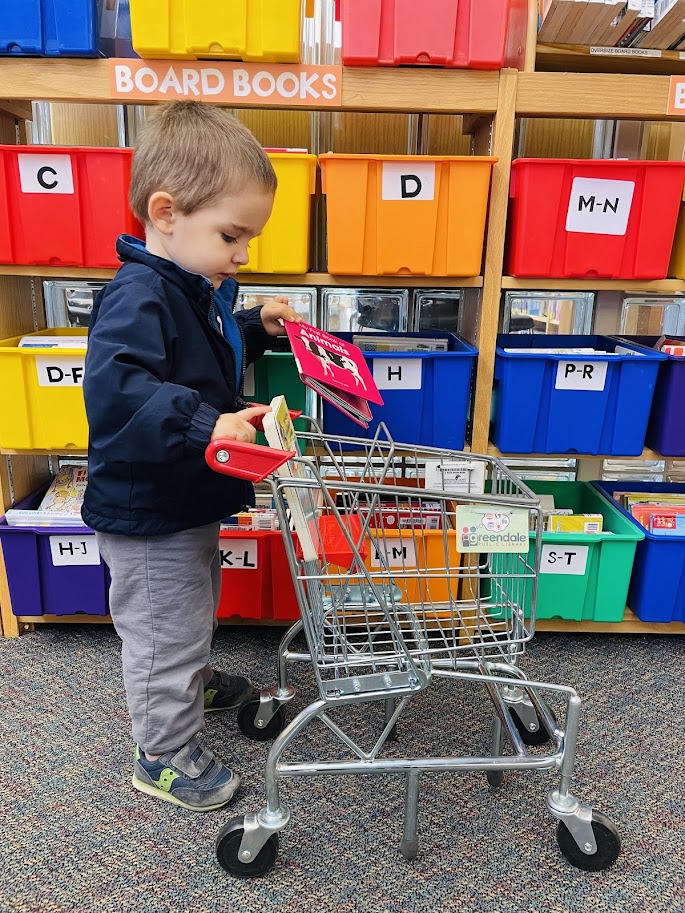
Conclusion
There you have the three elements to our minimalist homeschool plan! After trying other, more complicated programs and curricula, I really, really love how simple this is – and after doing it for several years I can see that it is enough. I love that it leaves us with plenty of time to play; I love that we can do SO MANY THINGS all together during our morning time; and I love that I don’t have to spend a lot of money on grade-specific workbooks or textbooks.
Now, you may be wondering if there are other things we do that do not fit into these three categories, and the answer is yes. Our three older boys practice piano most days, I give them books to read on their own (often the same book from which they are doing Copywork), and this past year our oldest had writing assignments from his Classical Conversations afternoon class. We’ve sometimes added in other “independent work” items for the older kids, such as a geography workbook or thinking/logic skills.
If you have a child who needs extra help with spelling or handwriting you may want to add in something to assist them. Many families will have some field trips or park outings or sports or music lessons sprinkled in throughout their days. However, all of these extras are not necessary for every family, nor are they foundational to our homeschool day, and I think twice (or thrice) before adding any of them in. In a pinch, we could drop everything else except these three main elements and do very well – and some days we do.
Morning time, copywork, and math are powerful learning tools that can work for any family in any situation. They are simple and affordable; they are effective; and, perhaps most importantly, I enjoy doing them with the children. Sarah Mackenzie always says the most important part of your homeschool is a Happy Mom, and in our experience, the simpler your homeschool plan is the more likely you are to achieve that title.
And, miracle of miracles, often when mom teaches less, the children end up learning more.
“The great educator Charlotte Mason says that when we put children in direct contact with great ideas and get out of the way, ‘Teachers shall teach less and scholars shall learn more.’ Any homeschooling parent who has observed her own children for any length of time will know this to be true. Real learning happens when our children wrestle directly with great ideas – not as a result of our repackaging those great ideas, but when they interact with the ideas themselves.” ~ Sarah Mackenzie in Teaching From Rest

